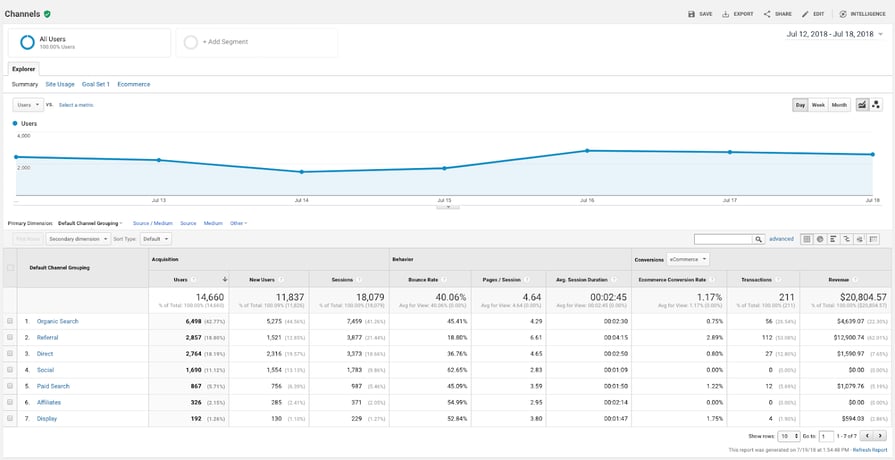BltLW News Hub
Your source for the latest insights and updates.
Google Analytics: The Crystal Ball for Your Website's Future
Unlock the secrets of your website's future with Google Analytics and turn data into your crystal ball for online success!
Unlocking Insights: How Google Analytics Predicts Your Website's Performance
Google Analytics is an essential tool for website owners and marketers alike, providing invaluable insights into user behavior and site performance. By utilizing advanced tracking features, it allows users to generate comprehensive reports that highlight key metrics such as page views, bounce rates, and session durations. Understanding these metrics is crucial for developing effective strategies to enhance user engagement and improve overall website performance. In a digital landscape where every click counts, the predictive capabilities of Google Analytics can unlock pathways to optimization and success.
One of the standout features of Google Analytics is its ability to forecast future user behavior based on historical data. This predictive analysis can help you identify trends such as seasonal traffic fluctuations or the potential impact of new marketing campaigns. By examining data points like conversion rates and user demographics, website owners can make informed decisions that steer their strategies towards greater effectiveness. Ultimately, leveraging these predictive insights can lead to a significant boost in site performance and user satisfaction.

10 Key Metrics in Google Analytics Every Website Owner Should Monitor
As a website owner, keeping a close eye on your Google Analytics data is crucial for understanding your site's performance and user behavior. Here are 10 key metrics you should monitor regularly:
- Sessions: The number of individual sessions initiated by all users on your site.
- Users: Unique visitors who have interacted with your site over a specified period.
- Pageviews: The total number of pages viewed, indicating the overall engagement on your site.
- Bounce Rate: The percentage of single-page sessions in which users leave without interacting with your site.
- Average Session Duration: The average length of time users spend on your site during a session.
Continuing the list, here are the remaining metrics to track:
- Traffic Sources: Understanding where your visitors are coming from can help refine your marketing strategies.
- Conversion Rate: The percentage of visitors who complete desired actions, such as signing up for a newsletter or making a purchase.
- Pages per Session: This metric reflects how many pages a user visits during a single session, helping gauge content effectiveness.
- Exit Rate: The percentage of visitors who leave your site from a specific page, providing insight into potential issues.
- Goal Completions: Tracking specific user actions tied to your business objectives is essential for measuring success.
Is Google Analytics the Key to Anticipating User Behavior on Your Website?
Understanding user behavior on your website is crucial for optimizing the user experience and enhancing conversion rates. Google Analytics serves as a powerful tool in this regard, providing a wealth of data that can help you anticipate how visitors interact with your content. By analyzing metrics such as bounce rates, session duration, and user flow, you can identify patterns that reveal user preferences and potential areas for improvement. For instance, a high bounce rate on a particular page may indicate that the content does not meet user expectations, prompting you to adjust your strategy accordingly.
In addition to basic metrics, Google Analytics offers advanced features like segmentation and real-time tracking, allowing you to gain deeper insights into specific user groups. By setting up goals and tracking conversions, you can measure the effectiveness of your marketing campaigns and see what resonates most with your audience. Furthermore, utilizing behavior flow reports helps visualize the path users take through your site, enabling you to pinpoint obstacles impeding their journey. Ultimately, leveraging the full capabilities of Google Analytics empowers you to make informed decisions that enhance user engagement and drive business success.